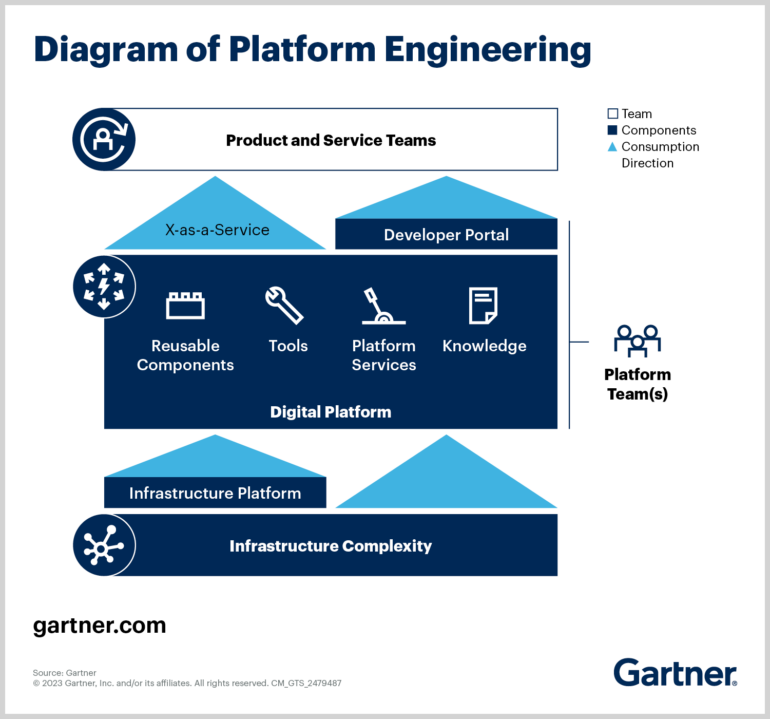Table of Contents Hide
Platform Engineering: The 2024 Game-Changer in Tech
 4 MIN. READING
4 MIN. READING
Originally published on DevOps.com
Platform engineering, a key driver in the ever-evolving technological landscape, is poised for significant momentum in 2024. This article explores the reasons behind its rising popularity, the types of organizations that stand to benefit, potential drawbacks and the crucial role of test data management (TDM) in this context.
What’s Driving Demand for Platform Engineering?
Platform engineering is anticipated to gain significant momentum in 2024 as it offers crucial advantages in accelerating business value, reducing cognitive loads and enhancing the efficiency of application development and management processes. According to Gartner, by 2026, about 80% of software engineering organizations will establish platform teams as internal providers of reusable services, components and tools for application delivery. This trend underscores the increasing adoption and importance of platform engineering in the tech world.
The growing popularity of platform engineering can be attributed to several factors:
- Developer productivity: Enhancing developer productivity is a key driver, accounting for approximately 21% of the reasons for its popularity.
- CI/CD pipeline implementation: About 20% of the popularity is driven by the need for efficient continuous integration and continuous delivery pipelines.
- Standardization of tools and processes: Another 20% comes from the necessity to standardize tools and processes.
- Security enhancements: Security improvements contribute 20% to its popularity.
- Infrastructure-as-code (IaC): Finally, 19% is driven by the adoption of infrastructure-as-code (IaC) methodologies.
In addition, platform engineering addresses the inefficiencies caused by the decentralization of tools and processes in DevOps, especially as organizations scale. This approach provides a more organized and centralized framework, which is essential in managing the complexities of modern software development environments.
As highlighted by Gartner, platform engineering’s potential to offer a frictionless self-service experience to customers and business partners is a significant factor in its rising popularity. This adaptability is crucial in an era where technology and market demands are rapidly evolving, requiring businesses to remain agile and competitive.
These factors collectively make platform engineering a strategic approach for software engineering organizations, particularly looking forward to the year 2024 and beyond.

Key Benefits of Platform Engineering
While it isn’t a fit for every organization, there are some shared attributes of companies that are most likely to benefit from it.
If your organization is seeking to:
- Reduce tool sprawl by standardizing tools and services
- Improve productivity through automation, leading to faster development cycles
- Establish governance frameworks for software development
- Increase scalability through technologies like containerization and orchestration
- Enhance security by integrating automated security scanning tools into the CI/CD pipeline,
then platform engineering may be right for you. These benefits are especially relevant for businesses facing complex software development cycles and those in need of robust, scalable, and secure solutions.
Drawbacks of Platform Engineering
However, platform engineering is not without its challenges. Increased complexity in infrastructure can be daunting for small-scale teams. High dependency on the platform may lead to difficulties in switching technologies or providers. Additionally, compatibility issues with existing development tools and technologies can slow down processes.
The Crucial Role of Test Data Management (TDM)
In a platform engineering environment, test data management (TDM) becomes a pivotal component. TDM’s importance lies in its role in agile development, ensuring test accuracy and reliability, thus enhancing the effectiveness of the testing process. Agile methodologies, which divide projects into smaller sprints, rely heavily on TDM for providing high-quality, compliant test data in a continuous integration and deployment model.
TDM addresses the challenge of managing data fragmented across various applications, environments and compliance levels. An entity-based TDM approach enables testers to provision test data on demand, streamlining the testing process and reducing the risk of data breaches. Ultimately, TDM practices significantly reduce time, cost, and risk in software delivery, making it a vital component in modern platform engineering strategies.
As technology continues to evolve rapidly, the role of platform engineering, bolstered by effective TDM, becomes increasingly crucial. Companies that do not adapt to these changes by integrating components like TDM into their platform engineering strategies will risk falling behind in the competitive tech market. Therefore, embracing these innovations is essential for survival and success in today’s fast-paced technological landscape.
